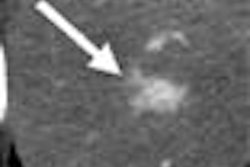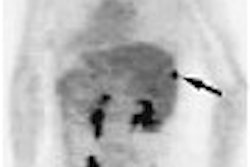(Radiology Review) CT assessment of liver involvement in hereditary hemorrhagic telangiectasia (HHT) is important because of high occurrence and the risk of serious complications, according to a study published in Radiology.
Italian radiologists at the University Hospital in Bari described CT findings in 70 consecutive patients, 64 with HHT and six suspected of having HHT.
CT images were obtained during early arterial, late arterial, and portal venous phases using a test bolus of contrast medium. Ultravist 370 was administered through the antecubital vein using a 16-18 gauge needle, and an MK-IV Medrad automatic injector. Contrast was administered at the rate of 4mL/s with a maximum of 150mL (2mL/kg). All but four patients were asymptomatic. One had experienced cardiac failure and three had episodes of hematemesis.
According to the authors, three types of intrahepatic shunts between the major vessels of the liver are common and include "arterioportal (hepatic artery to portal vein, arteriosystemic (hepatic artery to hepatic vein), and portosystemic venous (portal vein to hepatic or systemic veins)."
Parenchymal perfusion disorders were evaluated including hyperattenuating areas and vascular lesions. "Round highly enhanced lesions with a diameter of less than 10 mm and a prevalently peripheral arrangement were considered parenchymal hepatic telangiectases, and enhanced lesions with a diameter of more than 10 mm were considered large confluent vascular masses," they reported.
Hepatic vascular abnormalities were found in 74% of patients, and 8% of these were symptomatic. Arterioportal shunts were present in 52% of patients, arteriosystemic shunts were present in 15%, and 33% had both types of shunt present.
"Multi-detector row helical CT and reconstruction depict the complex hepatic vascular alterations typical of hereditary hemorrhagic telangiectasia," they concluded.
Hereditary hemorrhagic telangiectasia: multi-detector row helical CT assessment of hepatic involvementIanora, AAS, et. al.
Department of radiology, University Hospital, Policlinico of Bari, Bari, Italy.
Radiology 2004 January; 230:250-259
By Radiology Review
February 20, 2004
Copyright © 2004 AuntMinnie.com




















